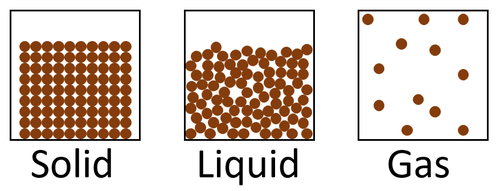Difference between revisions of "Density"
| Line 19: | Line 19: | ||
:<math>\rho = \tfrac{m}{V}</math> | :<math>\rho = \tfrac{m}{V}</math> | ||
Where: | Where: | ||
| − | ρ = density | + | : ρ = density |
| − | m = mass | + | : m = mass |
| − | V = volume | + | : V = volume |
===Density and Floating=== | ===Density and Floating=== | ||
: If an [[object]] is more '''dense''' than [[water]] it will sink. | : If an [[object]] is more '''dense''' than [[water]] it will sink. | ||
: If an [[object]] is less '''dense''' than [[water]] it will rise through [[water]] and float on the surface. | : If an [[object]] is less '''dense''' than [[water]] it will rise through [[water]] and float on the surface. | ||
Revision as of 10:59, 1 November 2018
Key Stage 3
Meaning
Density is the amount of mass per unit volume of an object.
About Density
- An object with a large amount of mass in a small volume is said to have a high density.
- An object with a small amount of mass spread over a large volume is said to have a low density.
- The units of density are kg/m3.
| Solids are the most dense state of matter because there are a large number of particles in a certain volume and gases are the least dense state of matter because there are a small number of particles in a the same volume. |
Equation
- Density = Mass/volume
\[\rho = \tfrac{m}{V}\] Where:
- ρ = density
- m = mass
- V = volume
